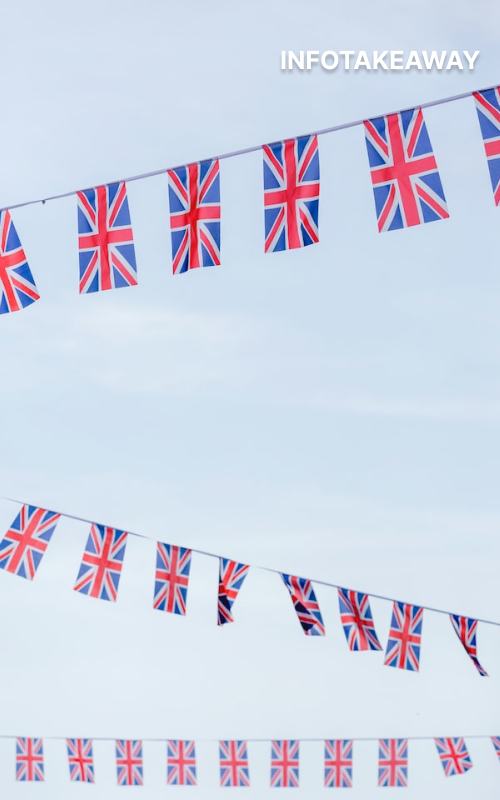Having trouble hanging that flag? You’re not alone; every year, many flags are improperly hung, leading to unsightly puckering of the fabric, tears or an unbalanced appearance.
Fortunately, there are several ways to hang your flag on a wall so that it appears beautiful and straight, whether it’s used indoors or out. Use these 7 tips on how to hang a flag on a wall for perfect results every time!
1) Location, location, location
Finding the perfect spot to hang your flag can be difficult. You’ll want it somewhere that it will be visible and allow some room to see past it.
It’s also important that you make sure you’re hanging it correctly! Hanging the flag incorrectly can damage both the fabric and the image.
- Don’t place your flag too high up on the wall. Ideally, you should have about two feet of space from the top of the frame to the ceiling when hanging it.
- Place it in an area where there is enough space so that people don’t walk in front of it while they are moving around in the space.
- Find a place where there isn’t too much sunlight shining directly on it, as this could fade out or change colors on your banner over time.
- For those with vaulted ceilings, avoid placing the flag near any doors or windows which might blow it away.
- Avoid hanging your flag outside if you live in a windy climate, since excessive wind can cause unnecessary wear and tear on the fabric.
- If possible, use a string hanger so that it can be taken down at any time without causing any damage to the wall surface or framing.
- Be sure not to cover any outlets with hooks that might hold your flags because electricity poses potential hazards like fire hazards.
- Keep children away from potential dangers like electrical outlets by ensuring their safety within the home before adding anything else.
2) Relevant hardware
Make sure that the flagpole is fixed into something. A normal wall won’t cut it and you want your flag to be at an angle, not straight.
It’s also very possible that you’ll need hardware to hang it from because drywall nails aren’t usually strong enough.

A good height will be about two feet from the ground, or 60 inches from the floor if that is what you’re used to.
Hang a piece of string or wire horizontally around halfway up the pole, so there are about eight inches left over on each side. Then, tie one end around the rope loop at either side of the pole in order to keep it in place while we put holes in our wall.
If the string sags too much, support it with pins or clothes pegs as needed.
Push a small nail into the edge of your paintwork where you want to put the top hole for holding the topmost part of your flag (or as close as you can get).
Put a washer on top and then push another nail through from below to secure them together. If this doesn’t work, try using some blue tack instead.
Repeat this process until you have all four holes needed. Once these are done, insert screws into the top of your flag hanging loops and screw them in by hand- they should only take a few turns before they are tight enough.
You can now move onto fixing the halyard. The cleat should go near one end of the horizontal string and this will allow you to pull it up when you want to raise your flag.
Tie one end of your halyard onto the cleat tightly before feeding it through both loops on both sides and tying it off securely again to make sure that everything is tight.
Now tie your other end of the halyard to a sturdy object like a nearby door handle or light fitting. Now that you’ve finished the hard part, time to decorate!
3) Adjustable picture hangers
- Determine the location of the top and bottom of your flagpole before hanging your flag.
- Check with your landlord, property management company, or homeowner’s association about what you can hang from your building.
- Attach picture wire to the top edge of the pole, then fold over 4-5 inches at one end of the wire so it hooks around a loop in the other end and tighten securely with pliers; repeat with other end and set aside flags until you are ready to hang them both at once.
- Hanging two flags side by side? Make sure they’re centered and stagger the height of each flag’s top hanger so that their tops don’t overlap.
- To anchor multiple poles onto one wall, measure the height of each pole (from where its hanger will go) from below the first hook, then divide that number by two to get how high up on the wall you’ll need to install a bracket for each bracket (e.g., if your hangers are three feet apart, drill holes 27 inches up).
- Always mount brackets onto concrete walls—never brick or stucco—with drywall anchors if possible; drywall anchors work best when attaching brackets to plaster walls (use nails or screws).
- Use an old rag to protect the paint and finish of your wall as you hammer in drywall anchors, then use a level to make sure they’re straight as you attach them.
- Mounting brackets too close together? Ask someone taller than you or use step ladders to reach upper levels, then stand back down and check if the flags look straight and even.
- If mounted correctly, no touch-ups should be necessary unless rain hits them directly – but contact us if this happens! Remember to re-tighten all bolts, screws, and brackets every six months or so to keep everything tight. Have fun hanging your flags!
4) Hanging Heavy Flags Safely
To hang heavy flags without damaging the surface of your wall, use eye hooks, and screw hooks. To hang with an eye hook, hammer the sharpened end into the desired location.

Once it’s secured into place, attach a small length of wire that runs through one loop of the eye hook and tightens around both loops with an extra wire tie (known as crooking).
Add enough slack in this wire so that the flag can swing in wind.
To hang by screw hook, you need to drill out small holes with a masonry bit or hole saw large enough for your screws.
Try to avoid wider expanses of brick or plaster walls because these materials do not offer any natural give and tend to crack more easily.
If you’re unable to find a stud inside the wall or if there are no studs within 3 feet of where you want to hang your flag, you’ll need some kind of drywall anchor to get started.
Depending on what type of door frames you have (shallow vs deep), a heavier-duty screw will be necessary.
5) Finding the right place on your wall
Before you get started, find the perfect place on your wall and make sure you have a clean surface with no dust or anything that can fall onto your new flag.

Once you’ve found the perfect spot, wipe it down and use painter’s tape to mark off the four points of your wall where you’re going to hang up your flag.
Double-check that each corner is level with the floor, then secure them with tacks or nails. It’s important that these corners are not only level horizontally but also vertically (i.e., one diagonal lineup).
If they’re hanging any other way, they might be too high or too low when the banner is done and it could look really strange.
The next step is to take some heavy-duty wire hangers and screw in hooks into the top two corners at eye level.
Then grab two small pieces of string or fishing wire and tie one end around each hook so that the flag will stay in place while you do all your measuring. Next, measure how far apart the hooks should be from each other based on what size your flag is.
Usually flags come in 3×5′ or 4×6′, so if you don’t know which size yours is, measure both distances and see which one works best for you.
After this, measure out enough string so that it goes over both hooks then tie it securely around both ends like in step 3 above.
Now you’re ready to hang up your flag! To finish things off, remove the hooks and lay the finished piece flat against the wall.
Use painter’s tape to hold it there until you’re ready to attach them back onto their hooks on the wall.
6) The right tools
You’ll need an L-shaped or two H-shaped hooks, depending of the location and size of your flag. You can also use a command hook if you want.
Make sure you measure where you want the flag to hang, determine how high up you need it to be, and then make sure the space is free from furniture.
Next comes hanging the flag! For all options, take the backing off of your adhesive, line up your flag so that it’s straight and flat against the wall–either horizontally or vertically–and then attach it.
Make sure there are no air bubbles by gently pulling outwards on all four corners. If you’re using an adhesive, press firmly to ensure it sticks.
If you’re using a nail or screw (if using screws, follow guidelines), mark the spot with chalk first before hammering in the hardware.
Check for any nails sticking out at the top and bottom of your flag before touching it. If there are any present, try tightening them with pliers until they’re flush with your surface (you don’t want anything poking out!).
If this doesn’t work, remove them completely as they may cause injury when touched.
7) Rule of thirds when hanging flags vertically
Once you have the flag and the staff, it’s time to start thinking about hanging the flag. If you have horizontal space in your living room or bedroom, hang the flag across that expanse; if not, hang it vertically.
The most important rule when hanging flags vertically is making sure they look proportional to one another.
One of the best ways to achieve this is using what’s called the rule of thirds. Divide your area into three parts by imagining lines running horizontally and then dividing each section vertically with another line through it.
The top third will go from left to right at eye level, while the lower two-thirds will go from bottom to top at eye level.
8) Spacing guidelines
Many people hang flags vertically, or perpendicular to the ground. This is done by finding two stable points and securing them horizontally.
You can either use hooks or nails. If you are hanging your flag inside, try attaching the top of the pole into an eye bolt that has been secured into the wall at least 16 inches off of the floor and higher if possible.
If you are hanging it outside, make sure that it will be protected from damaging winds and won’t come in contact with chemicals or other corrosive materials such as paint, fertilizer, tree sap, etc.
The best way to do this is to buy a frame made specifically for holding flags outdoors. It should have slots that allow you to slide the wire through before tightening it around the pole.
Another consideration when placing your flag outdoors is whether or not you want visitors and passersby able to see what country’s flag it is.
If so, place the side of the star up so they are facing outwards away from onlookers.
9) Framing your flag with pictures and other decorative accessories
If you want your flag to appear as if it is flying in the wind, you will need someone to help you. Ideally, hang the flag about two feet off the ground so that it can freely wave back and forth.
Find an area where you think it would look nice.
First, find a stud or a molding (whatever looks best) near the spot where you want your flag hung, and mark its height by holding your hand up at arm’s length next to it.
Hold one end of the rope over the top of this point while someone else holds the other end over their head.
The person holding the rope should pull until there is tension in it – but not too much! Once you have a good amount of tension, tie a simple knot on each end of the rope.
Then tape the ends of the rope together. Now loop the ends around whatever you found earlier and tie another knot just above where they meet.
Make sure these knots are tight enough so that they don’t come undone easily. Finally, put something heavy on top of the knots to hold them down tightly
Conclusion
So, there you have it! It really is easy to display your country’s colors proudly and beautifully in your own home.
All you need is a blank wall and these 7 tips. Don’t forget to share your completed flag with us in the comments below!
You will also enjoy “DIY wall decor ideas“, “succulent wall planter“, and “brick wall decor.” Check out our homepage for more similar content.
